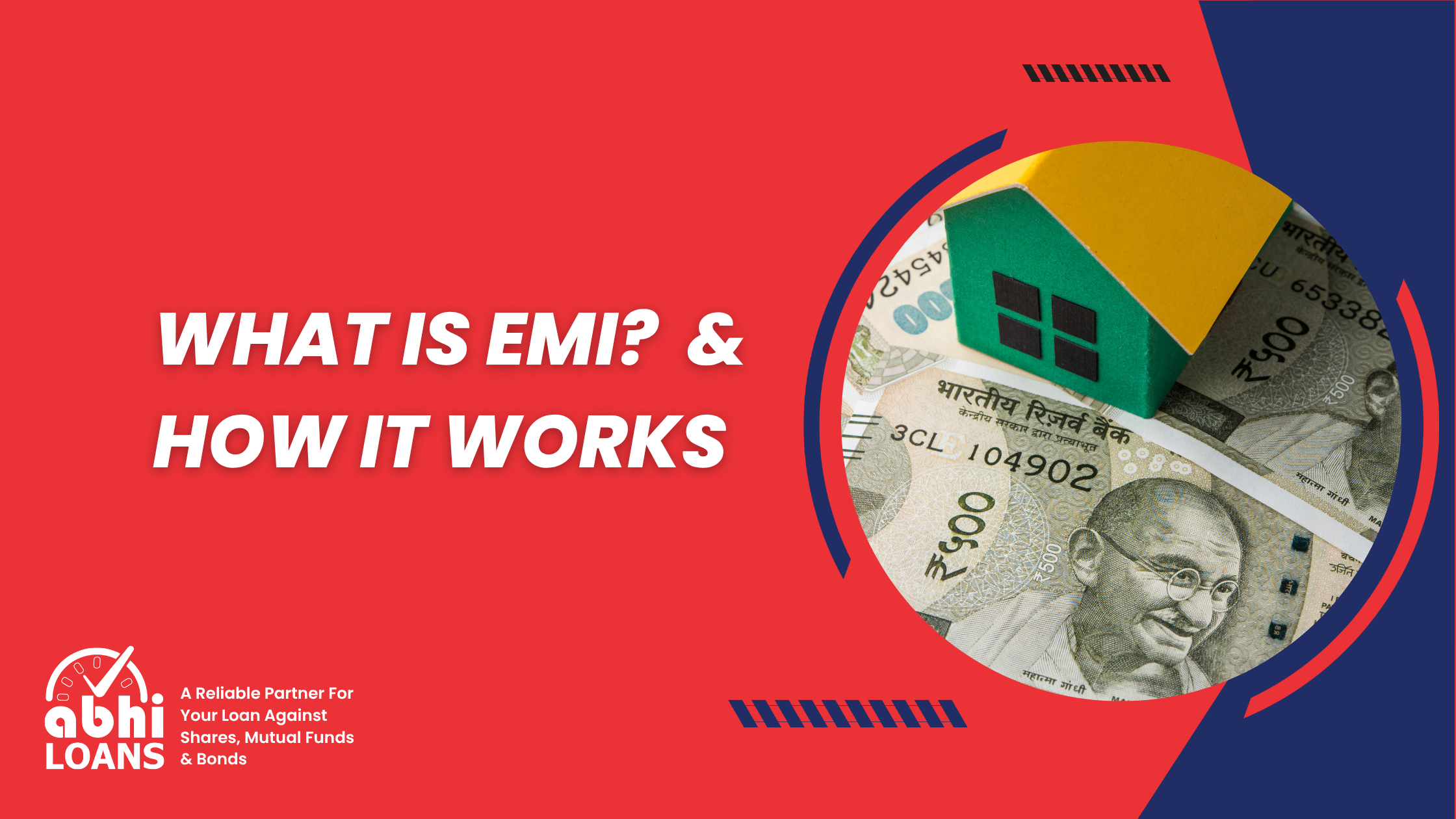What is EMI? Meaning, Full Form, Calculation & Complete Guide
If you are planning to buy a house, or car, or pay for your child’s education, you’ve probably heard the word EMI. It’s a common term in personal finance, but many people don’t know what it means or how it works. In this blog, we’ll explain everything you need to know about EMI—what it is, how it’s calculated, and why it’s important to understand before taking a loan.
What is EMI and How Does It Work?
An EMI helps you repay a loan in small, easy monthly payments instead of one large lumpsum. These payments usually happen on a set date each month and are often taken directly from your bank account to ensure you don’t miss them.
Here’s an example:
Imagine you borrow ₹5 lakhs at 10% annual interest for 3 years. Rather than paying the full amount plus interest in one go, you’ll repay it over 36 monthly EMIs. This structured repayment helps you manage cash flow without overwhelming your budget.
What is the Full Form of EMI?
EMI stands for Equated Monthly Installments. Basically, it’s the amount you need to pay each month toward your loan.
Each EMI payment has two parts:
- Principal – the portion that goes toward repaying the original loan amount.
- Interest – A fee charged by the lender for giving you the loan.
EMIs are popular because they make things simpler. Instead of repaying the full loan amount at once, you can spread the amount over several months or years. This makes it easier to afford expensive things like a house, car, or education.
How is EMI Calculated?
EMI Formula:
EMI = [P × R × (1 + R)N] / [(1 + R)N − 1]
Where:
- P = Principal loan amount
- R = Monthly interest rate (Annual interest ÷ 12 ÷ 100)
- N = Number of monthly installments (loan tenure in months)
For instance:
- P = ₹5,00,000
- R = 12% annually = 0.01 monthly
- N = 36 months
EMI Formula:
EMI = [P × R × (1 + R)N] / [(1 + R)N − 1]
Example:
P = ₹5,00,000
R = 12% annually = 0.01 monthly
N = 36 months
EMI = [500000 × 0.01 × (1 + 0.01)36] / [(1 + 0.01)36 − 1]
The result? An EMI of approximately ₹16,607.
EMI Calculation Made Simple
While the formula is useful, you don’t need to crunch numbers yourself. Online EMI calculators can do it in seconds. Just add the loan amount, interest rate, and duration to begin the calculation.
- Your monthly EMI
- Total interest payable
- Total amount repayable
Using these tools helps you compare loan options, choose the right tenure, and plan your monthly finances better.
Types of Loans That Use EMIs
EMIs apply to a wide variety of loans. Some common ones include:
- Home Loan – For buying or building a house. These often span 20–30 years.
- Personal Loan – Unsecured loans used for weddings, emergencies, travel, etc. Usually 1–5 years.
- Car Loan – For buying an automobile. Tenure typically ranges from 3–7 years.
- Education Loan – For higher studies. You start repaying the loan after the moratorium period is over.
- Consumer Durable Loan – For electronics or appliances. Some come with zero-cost EMI options.
- Loan Against Securities – You can pledge shares or mutual funds and repay in EMIs.
Each of these comes with its own interest rates, terms, and repayment rules so always read the fine print.
What Affects Your EMI Amount?
Several key factors determine how much you’ll pay each month:
- Loan Amount – Higher loans result in larger EMIs.
- Interest Rate – More interest means a bigger EMI; less interest means a smaller EMI.
- Loan Tenure – Longer tenure lowers EMI but increases total interest.
- Interest Type – Reducing balance EMIs are usually cheaper than flat rate.
- Credit Score – The better your score, the less you may pay in interest and EMI.
- Prepayments – Paying extra reduces your principal and EMI or tenure.
Fixed vs. Reducing Balance EMI
Let’s break down the difference between two common EMI structures:
1. Fixed Interest EMI
Here, the interest is calculated on the original loan amount throughout the entire term. Your EMI stays unchanged, but you may end up paying more interest overall.
2. Reducing Balance EMI
Interest is calculated only on the outstanding loan balance. As you pay off the principal, the interest charged also drops. This structure is typically more cost-effective and is widely used in home and personal loans in India.
Why Paying via EMI Makes Sense
Here are some clear benefits of EMI-based repayments:
- Affordability – EMIs break down big expenses into smaller chunks.
- Cash Flow Management – You know exactly how much goes out every month.
- Financial Flexibility – Continue to save and invest while repaying your loan.
- Credit Score Boost – Timely payments can significantly improve your creditworthiness.
What Happens If You Miss an EMI?
Missing an EMI can lead to:
- Late payment penalties
- Drop in your credit score.
- Legal notices or recovery action for multiple defaults
- When loan repayments are overdue for too long, the loan turns into an NPA.
It’s best to set up auto-debit or reminders to avoid such slips. If you’re facing financial stress, contact your lender early to explore restructuring options.
Smart Tips to Manage EMIs
- Keep EMIs within 30–40% of your net monthly income.
- Don’t juggle too many loans at once.
- Create a financial buffer to protect yourself from sudden emergencies.
- Always compare different lenders to find the best interest rates and loan terms.
EMI and Your Credit Score
EMI payments play an important role in creating and maintaining your credit score. Consistent, timely repayments reflect positively and open doors for future loans at better rates. On the flip side, defaults can damage your financial reputation for years.
EMI payments are important for building and maintaining your credit score. Paying on time regularly helps improve your score and makes it easier to get future loans at better rates. However, missing payments can harm your credit and affect your financial reputation for years.
Conclusion
Understanding EMIs is more than just knowing what the acronym stands for. It’s about making informed borrowing decisions that align with your financial goals. Whether you’re eyeing a dream home, or a new car, or need funds for your child’s education.
EMI gives you the flexibility to repay at your own pace. Use EMI calculators, compare offers, and choose terms that fit your budget. A little planning today can save you a lot of stress tomorrow.

